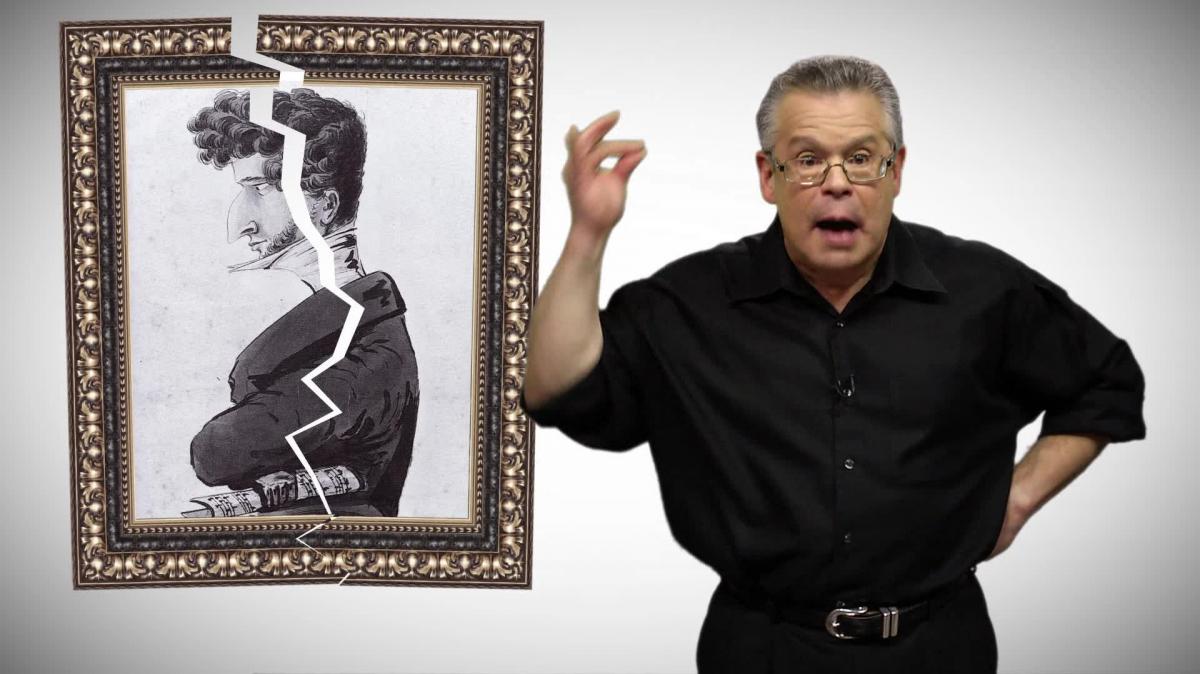 On this date in 1833 the 29 year-old French composer Hector Berlioz married the 33 year-old Anglo-Irish actress Harriet Smithson. They tied the knot at the British embassy in Paris; the wedding was officially witnessed by Berlioz’ good bud, the pianist and composer Franz Liszt.
On this date in 1833 the 29 year-old French composer Hector Berlioz married the 33 year-old Anglo-Irish actress Harriet Smithson. They tied the knot at the British embassy in Paris; the wedding was officially witnessed by Berlioz’ good bud, the pianist and composer Franz Liszt.
Berlioz had moved to Paris from his hometown in the French Alps in 1822, presumably to study medicine. His passport described the 18 year-old Berlioz as being:
“About five foot three or five foot four in height, red hair, red eyebrows, beginning to grow a beard, forehead ordinary, eyes gray, complexion high.”
What that passport description does not mention is that Berlioz burned with passion for pretty much everything except medicine, in particular music, theater, and literature. Predictably, he washed out of medical school within a matter of months. Unwilling to return home, he bounced around Paris living in poverty, and—when he had a little money in his pocket—he attended the opera standing room and took a few music lessons.
After a rather difficult application process (it was rumored that Berlioz’ father had to bribe the admissions officer), the now 23 year-old Hector Berlioz entered the Paris Conservatory, a full five years older that most of the other incoming students. He covered his insecurity about his marginal musical skills by posturing and opinionating constantly. His classmate, Ferdinand Hiller, was properly scandalized by Berlioz: “He believes in neither God nor Bach!” hissed Hiller.
In fact: Hector Berlioz was a hypersensitive, self-indulgent, loud-mouthed nut, living in an era that celebrated hypersensitive, self-indulgent, loud-mouthed nuts. He fit flawlessly the stereotype of the Romantic “artiste”, and he played it to the hilt.
On September 11, 1827, Berlioz attended a Parisian performance of Shakespeare’s Hamlet. The play was performed in English, a language Berlioz did not speak at the time. Nevertheless, he was bowled over by the experience, and not just by the play but by a particular actress in the cast. This is how Berlioz told the story:
“I come now to the supreme drama of my life. An English company had come over to Paris to give a season of Shakespeare at the Odeon. I was at the first night of Hamlet. In the role of Ophelia I saw Henriette [actually, her name was Harriet] Smithson. The impression made on my heart and mind by her extraordinary talent, nay, her dramatic genius, was equaled only by the havoc wrought in me by the poet she so nobly interpreted. That is all I can say.”
Berlioz proceeded to carry a torch for Ms. Smithson for four years. He wrote to her. He sent her flowers. He mooned over her performances. He rented an apartment near hers so he could watch her come and go. By his own confession he pined for her, lusted for her, suffered, hankered, thirsted and ached for her; he dreamt of no one but her. He even composed his first masterwork about her: Berlioz’ Symphony Fantastique of 1830 is “about” an artist who is madly in love with a woman who does not know he exists.
When it came to Harriet Smithson, Hector Berlioz was a psycho stage-door Johnny, a class “A” stalker, and she avoided him like head lice. Until 1832 that is, when a mutual friend invited her to a performance of Berlioz’ Lélio, or the Return to Life. Lélio—scored for orchestra, chorus, and narrator—is the sequel to Symphony Fantastique (they each employ the same principal theme). By attending that performance of Lélio, Smithson had an epiphany: she realized that the Symphony Fantastique was about her! She contacted Berlioz; he came to visit; they became lovers; and despite her misgivings and opposition from both of their families (and their friends), they were married on October 3, 1833.
OMG, how romantic! But not really. Because even as Berlioz’ career was taking off, Smithson’s was winding down; she had aged past the ingénue roles on which she had built her career. She retired for good in 1836; became pathologically jealous and possessive of her husband; took to the bottle; and became verbally (and some say physically) abusive of her husband even as her own body began to break down. Berlioz, who loved Harriet and conducted himself with dignity throughout, nevertheless took a mistress in 1841: an opera singer named Marie Recio (who eventually become the second Mrs. Berlioz). Two years later—in 1843—Harriet Smithson walked out, never to return. She died, broken and paralyzed by strokes, in 1853. But Berlioz never forgot her, and when he died in 1869 and was buried in the Cimetière de Montmartre, he left instructions that Harriet’s body be exhumed and buried next to his. And that’s where they rest, together, to this day.
Admittedly grim though it is, that is very romantic.
